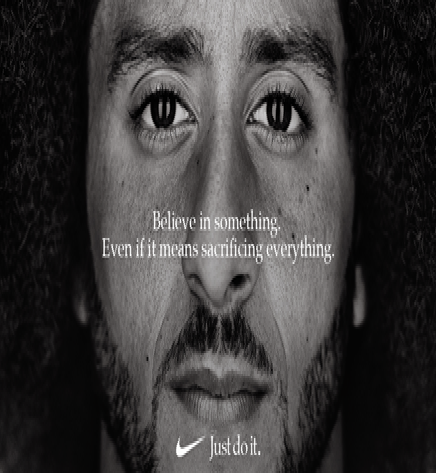1085Views

RISKY MARKETING CAMPAIGNS THAT PAID OFF
As marketers, the first instinct is to create a campaign that mitigates the risk in planning and executing the campaign idea. But, sometimes, taking the plunge is all it takes to land in the right place and capture everyone’s attention. They may seem too risky or bold at present, but these campaigns manage to lure the audience and build brand loyalty in the long run. Sometimes, going against the wind, and abandoning the age-old practices, works in the favour of the company.
Mark Zuckerberg once said, “The biggest risk is not taking any risk. In a world that is changing quickly, the only strategy that is guaranteed to fail is not taking risks.” Reckoned decisions and results will only lead to a mediocre output, therefore, it is necessary to take the leap and try something unusual. It can be perverse sometimes, especially when there are countless competitors in the market.
There is a plethora of campaigns that embraced unconventional ways of marketing, leaving a mark in everybody’s mind.
One such strategy was Dove’s ‘real beauty’ campaign. This campaign might not seem risky at present but, it sure was a conspicuous move to launch it back in 2006 when people were not vocal about body shaming and discrimination. The campaign portrayed women of all sizes and colour, with unconcealed stretch marks, wrinkles, etc. changing the definition of beauty and igniting a conversation among people, leading to newfound respect and love for the brand in the minds of the customers converting it into its brand loyalty in the long run.
Knowing that the campaign would be perceived as a superficial marketing tactic, the brand also created a fund with organizations like Girl Scouts and many others. Huge risk and a bold move resulting in a change of perception among the people benefitting the brand in the process.
Controversies are a source of unparalleled attention from the customers and take up more mind space in their minds.
Nike took a huge plunge when it decided to launch the “Believe in Something.” campaign. The campaign featured Colin Kaepernick, an athlete who decided to stand against racial injustice by refusing to stand for the National Anthem. He stirred a lot of controversy and discussion around the issue. Evidently, Nike had taken a chance, being fully aware that it can be viewed as brave or brash. But the campaign proved to be highly successful and one of the most unforgettable campaigns.
The sales of Nike hit the roofs by a 31% increase and the share price skyrocketed. The Ad resonated with the Millennials and GenZ generation, being a more progressive audience. Another example of a risky marketing campaign is shockvertising. Shock advertising or shockvertising can create an immense amount of impact on the purchases of customers and brand image. The impact can be positive or negative.
A campaign called ‘A Story Book Wedding – Except one thing’ launched by UNICEF as a multi-country initiative by the UN is an example of shock advertising to raise awareness of child marriage.
The ad elicited the emotion of hysteria in almost 35% audience and 32% were curious to find out more about the ad. The ad had a long build-up that kept the viewers hooked to the screens to find out more about what is happening. 42% of viewers were willing to strike a conversation regarding what was addressed in the ad proving to be a perfect example of how shockvertising can help is spreading awareness if executed in the right manner.
Burger King came up with a daring concept of ‘The Mouldy Whopper’, the ad uses time-lapse photography to show the deterioration of the burger due to artificial preservatives.
The ad was designed to promote the removal of the preservatives from its food items. The campaign breaks the rules of food promotion. In India, one of the most prominent brands that are known for unconventional ways of marketing and shock value is Fastrack.
The brand has chosen to be different and not follow norms from the start. Every campaign of theirs involved a high-risk factor such as ‘Move On’, ‘Sorry for what’, and ‘Come out of the Closet’.
These examples manifest how unconventional methods of marketing and taking necessary risks can create a great impression on the minds of the customers, building brand image and loyalty. Not all marketers choose to take this risk and do not explore the world of undiscovered and uncommon ideas and strategies. The truth is, Risky Marketing campaigns help the company distinguish itself from other competitors and increases brand visibility. A marketer’s goal is to make people remember the campaign and the product associated with it even after a long time.
Thinking big and better will help the brand have far-reaching effects, embracing the path of risky marketing, as “boldness has genius, power, and magic in it.”
At Vivekanand Business School, Mumbai, students of the PGDM in Marketing specialization are trained not only in data-driven strategy but also in bold, creative thinking—essential traits for crafting high-impact campaigns like the ones explored above.
The Vivekanand PGDM program equips aspiring marketers with the confidence to experiment, the skills to evaluate market responses, and the ethical grounding to ensure their campaigns resonate responsibly with audiences. Students engage with real-world projects, dissect iconic campaigns, and gain exposure through live case studies and internships with top brands.
In a landscape where calculated risk-taking defines brand differentiation, VBS nurtures future leaders who can blend innovation with insight. This forward-thinking pedagogy makes VBS stand out among the best PGDM colleges in Mumbai for marketing aspirants looking to leave a lasting mark in the industry.
Anjali Nair
PGDM Batch 2020-2022
Vivekanand Business School


